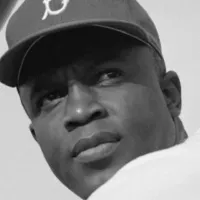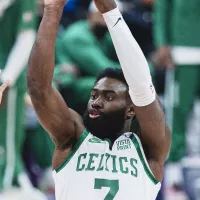The Minnesota Twins are a professional baseball team based in Minneapolis. They are members of the American League (AL) Central Division in Major League Baseball (MLB). The team's name is derived from the "Twin Cities" nickname given to Minneapolis and Saint Paul.
1901: Franchise Regular Season Record
From 1901 to 2023, the Senators/Twins franchise's overall regular-season win–loss–tie record is 9,259–9,955–109 (.482).
1901: Team Relocation to Washington, D.C.
In 1901, the Kansas City Blues relocated to Washington, D.C., and became the Washington Senators, marking their entry into Major League Baseball.
1901: Franchise Founded in Washington, D.C.
In 1901, the team was founded in Washington, D.C., as one of the eight original teams of the American League and was named the Washington Senators.
1904: Washington Senators Name
From 1901 to 1904, the team was named the Washington Senators.
1907: Arrival of Walter Johnson
In 1907, 19-year-old pitcher Walter Johnson arrived to the Washington Senators.
1911: Walter Johnson's 25 Victories
In 1911, Walter Johnson achieved 25 victories, though the team still finished the season in seventh place.
1912: Clark Griffith's Tenure
From 1912 to 1920, during Clark Griffith's tenure as manager, the team was unofficially referred to as the "Grifs".
1912: Improved Season for the Senators
In 1912, the Senators improved dramatically with their pitching staff leading the league in team earned run average and in strikeouts. Walter Johnson won 33 games, and Bob Groom added 24 wins, helping the Senators finish the season in second place.
1913: Johnson's Career High Wins
In 1913, Walter Johnson posted a career-high 35 victories, as the Washington Senators finished in second place.
1920: Griffith Becomes Team Owner
In 1920, Clark Griffith joined the team in 1912 and became the team's owner. The franchise remained under Griffith family ownership until 1984.
1920: End of Clark Griffith's Early Tenure
In 1920, Clark Griffith's initial tenure as manager concluded, though the team was unofficially referred to as the "Grifs" during his time.
1924: Senators Win 1924 World Series
In 1924, Walter Johnson rebounded to win 23 games, helping the Senators win the American League pennant and face the New York Giants in the 1924 World Series. The Senators trailed the Giants 3-1 in the 8th inning of the deciding 7th game when Bucky Harris hit a ground ball that hit a pebble, tying the score. Walter Johnson came in to pitch the ninth inning and held the Giants scoreless into extra innings. The Senators ultimately won in the bottom of the twelfth inning. This marked the only World Series triumph for the franchise during their 60-year tenure in Washington.
1924: Washington Senators World Series Victory
The Twins elected to erect a permanent display of a "W" as a "reminder of our franchise's legacy as a charter member of the American League", referring to the Washington Senators and their World Series victory in 1924.
1925: American League Champions
In 1925, the Washington Senators repeated as American League champions but lost the 1925 World Series to the Pittsburgh Pirates.
1927: Walter Johnson Hired as Manager
In 1927, after Walter Johnson retired as a player, he was hired as manager of the Washington Senators.
1930: Senators Return to Contention
In 1930, after enduring a few losing seasons, the Washington Senators returned to contention.
1933: Senators Win Pennant, Lose World Series
In 1933, Senators owner Griffith returned to the formula that worked for him nine years earlier: 26-year-old shortstop Joe Cronin became player-manager. The Senators posted a 99–53 record and cruised to the pennant seven games ahead of the New York Yankees, but in the 1933 World Series the Giants exacted their revenge, winning in five games.
1933: Twins win since 1933
In 1962, the Twins won 91 games, the most by the franchise since 1933.
1934: Senators Sink in Standings
In 1934, following the loss in the World Series, the Washington Senators sank all the way to seventh place, and attendance began to fall.
1935: Return of Harris as Manager
From 1935 to 1942 and again from 1950 to 1954, despite the return of Harris as manager, Washington was mostly a losing ball club for the next 25 years, contending for the pennant only during World War II.
1941: Carew's Batting Title
In 1977, Carew batted .388, which was the highest in baseball since Boston's Ted Williams hit .406 in 1941. He won the 1977 AL MVP Award.
1942: Harris Manages the Senators
From 1935 to 1942 and again from 1950 to 1954, despite the return of Harris as manager, Washington was mostly a losing ball club for the next 25 years, contending for the pennant only during World War II.
1946: Mickey Vernon Batting Champion
Cecil Travis, Buddy Myer (1935 A.L. batting champion), Roy Sievers, Mickey Vernon (batting champion in 1946 and 1953), and Eddie Yost were notable Senators players whose careers were spent in obscurity on losing teams. In 1946, Mickey Vernon was batting champion.
1946: Red Sox Pennant
Heading into the final weekend of the 1967 season, the Twins, Boston Red Sox, Chicago White Sox, and Detroit Tigers all had a shot at clinching the American League championship. The Red Sox won both games, seizing their first pennant since 1946.
1950: Harris Manages the Senators
From 1935 to 1942 and again from 1950 to 1954, despite the return of Harris as manager, Washington was mostly a losing ball club for the next 25 years, contending for the pennant only during World War II.
1953: Mickey Vernon Batting Champion
Cecil Travis, Buddy Myer (1935 A.L. batting champion), Roy Sievers, Mickey Vernon (batting champion in 1946 and 1953), and Eddie Yost were notable Senators players whose careers were spent in obscurity on losing teams. In 1953, Mickey Vernon was batting champion.
1954: Harris Manages the Senators, Killebrew Signed
In 1954, from 1935 to 1942 and again from 1950 to 1954, despite the return of Harris as manager, Washington was mostly a losing ball club for the next 25 years, contending for the pennant only during World War II. Also in 1954, the Senators signed future Hall of Fame member Harmon Killebrew.
1955: Calvin Griffith Takes Over
In 1955, after Griffith's death, his nephew and adopted son Calvin took over the team presidency. Calvin sold Griffith Stadium to the city of Washington and leased it back, leading to speculation about a move.
1955: Damn Yankees Broadway Musical
In 1955, the Washington Senators' long bouts of mediocrity were immortalized in the Broadway musical "Damn Yankees".
1956: Return to Washington Senators Name
In 1956, the team was renamed the Washington Senators again.
1957: Griffith Courts Minneapolis-St. Paul
In 1957, after flirting with San Francisco, Griffith began courting Minneapolis–St. Paul, rejecting the Twin Cities' first offer before agreeing to move.
1958: Increased Home Attendance
In 1958, home attendance in Washington, D.C., steadily increased from 425,238 in 1955 to 475,288.
1959: Killebrew Leads League in Home Runs
In 1959, Harmon Killebrew led the league with 42 home runs, earning him a starting spot on the American League All-Star team.
1959: Attendance Jump
In 1959, home attendance in Washington, D.C. jumped to 615,372.
1960: Deal Reached for Move
In 1960, a deal was reached that allowed Griffith to move his team to the Minneapolis-St. Paul region. Major League Baseball agreed to let Griffith move his team and allowed a new Senators team to be formed in Washington for the 1961 season.
1960: End of Second Washington Senators Era
In 1960, the team's second stint as the Washington Senators concluded.
1960: Lakers Move
The NBA's Minneapolis Lakers had moved to Los Angeles in 1960 due to poor attendance, blamed in part on a perceived reluctance of fans in Saint Paul to support the team.
1961: Twins Uniforms with "Twins" script
From 1961 the Twins sported uniforms bearing the classic "Twins" script and numerals in navy outlined in red, and navy caps with an interlocking "TC" on the front. The original "Minnie and Paul" alternate logo appears on the left sleeve of both the pinstriped white home uniform and gray road uniform.
1961: Throwback Off-White Uniforms
From 2010 to 2018, the Twins wore the throwback off-white version of their 1961–71 home uniforms.
1961: New Senators Team Formed
In 1960, a deal was reached that allowed Griffith to move his team to the Minneapolis-St. Paul region. Major League Baseball agreed to let Griffith move his team and allowed a new Senators team to be formed in Washington for the 1961 season.
1961: Bob Casey becomes the Twins' first public-address announcer
In 1961, Bob Casey became the Twins' first public-address announcer. He was known for his unique delivery and signature announcements.
1961: Twins Arrive in Minnesota
In 1961, the Twins were eagerly greeted in Minnesota. They brought a nucleus of talented players: Harmon Killebrew, Bob Allison, Camilo Pascual, Zoilo Versalles, Jim Kaat, Earl Battey, and Lenny Green.
1961: Relocation to Minnesota and Renaming
In 1961, the Washington Senators franchise relocated to Minnesota and was renamed the Minnesota Twins for the start of the season. The Twins played in Metropolitan Stadium from 1961 to 1981.
1961: Expansion Team Nickname
In 1961, the media often shortened the nickname to "Nats" — even for the expansion team.
1961: Killebrew Played as a Senator
Prior to the move to Minnesota in 1961, Killebrew played seven seasons as a Senator, including two full seasons as a regular.
1961: Twins Share Stadium with Vikings
Since their move to Minnesota in 1961, the Twins shared a stadium with the NFL's Minnesota Vikings, limiting the team's revenue.
1961: WCCO Held Broadcast Rights for Twins
WCCO (AM 830) held broadcast rights for the Twins since the team moved to Minneapolis in 1961.
1962: Discrimination Complaint Filed
In 1962, the Minnesota State Commission on Discrimination filed a complaint against the Twins, which was the only MLB team still segregating players during spring training and when traveling in the southern United States.
1962: Twins Win 91 Games
In 1962, the Twins won 91 games, the most by the franchise since 1933.
1964: Oliva Wins Batting Championship
In 1964, Tony Oliva won the American League batting championship.
1965: Twins Win American League Pennant
In 1965, behind Mudcat Grant's 21 victories, Versalles' A.L. MVP season and Oliva's batting title, the Twins won 102 games and the American League Pennant but were defeated in the World Series by the Los Angeles Dodgers.
1965: Twins Finish One Win Short of Franchise Record
In 2019, the Twins finished the season with the second-most wins in franchise history with 101, one short of the 1965 season.
1967: Pennant Race
Heading into the final weekend of the 1967 season, the Twins, Boston Red Sox, Chicago White Sox, and Detroit Tigers all had a shot at clinching the American League championship. The Red Sox won both games, seizing their first pennant since 1946.
August 1969: Martin Fight
In August 1969, Billy Martin was involved in a fight in Detroit with Dave Boswell and Bob Allison, leading to his firing after the season.
1970: Division title
After winning the division again in 1970, the team entered an eight-year dry spell, finishing around the .500 mark.
1970: Division Title and Cy Young Award
In 1970, Bill Rigney led the Twins to a repeat division title, behind the star pitching of Jim Perry (24–12), the A.L. Cy Young Award winner, while the Orioles again won the Eastern Division Championship behind the star pitching of Jim Palmer. Once again, the Orioles won the A.L. Championship Series in a three-game sweep, and this time they would win the World Series.
1971: End of "Twins" script uniforms
1971 was the last year the Twins sported uniforms bearing the classic "Twins" script and numerals in navy outlined in red.
1971: Oliva Wins Batting Championship
In 1971, Tony Oliva won the American League batting championships.
1972: Twins Updated Uniforms
For the 1972 season, the Twins updated their uniforms by reversing the color scheme on the "Twins" script and numerals, removing pinstripes from the home uniform, and updating the "Minnie and Paul" roundel patch on the left sleeve.
1973: Switch to Polyester Pullover Uniforms
In 1973, the Twins switched to polyester pullover uniforms, including a powder blue road uniform. Chest numerals were added while a navy-brimmed red cap was used with the home uniform. The original "Minnie and Paul" logo returned to the left sleeve.
1973: 1973-86 Throwback Uniforms in 2009
In 2009, the Twins wore a buttoned version of their 1973–86 home uniforms.
1973: Powder Blue Throwback Uniform
In 2020, a throwback-inspired powder blue uniform was unveiled. It is a modern buttoned version of the road uniform the team used from 1973 to 1986, the set contains the classic "Twins" script in red outlined in navy, along with red letters on the back and red numerals outlined in navy.
1974: Killebrew Departs
In 1974, Harmon Killebrew departed from the Twins.
1975: Carew's Batting Title
In 1975, Carew won his fourth consecutive AL batting title, having already joined Ty Cobb as the only players to lead the major leagues in batting average for three consecutive seasons.
1976: Thurman Munson Wins AL MVP
In 1976, Thurman Munson of the New York Yankees won the AL MVP. Prior to Iván Rodríguez winning the AL MVP in 1999, Munson was the last catcher to win the AL MVP.
1977: Carew's MVP Season
In 1977, Carew batted .388, which was the highest in baseball since Boston's Ted Williams hit .406 in 1941. He won the 1977 AL MVP Award. In that year, Owner Calvin Griffith faced financial difficulty with the start of free agency, costing the Twins the services of Lyman Bostock and Larry Hisle, who left as free agents after the 1977 season
1977: Player Names Added to Road Uniform
In 1977, player names in red were added to the Twins' road uniform.
1978: Carew's Batting Title and Trade
In 1978, Carew won another batting title, hitting .333 and Carew, who was traded after the 1978 season.
1981: End of Metropolitan Stadium Era
In 1981, the Minnesota Twins finished their tenure at Metropolitan Stadium, having played there since 1961. They would relocate to the Hubert H. Humphrey Metrodome in 1982.
1982: Move to the Metrodome
In 1982, the Minnesota Twins began playing at the Hubert H. Humphrey Metrodome, where they would remain until 2009.
1982: Twins Move to Metrodome and Solidify "Twinkies" Nickname
In 1982, the Twins relocated to the Hubert H. Humphrey Metrodome in downtown Minneapolis, sharing it with the Minnesota Vikings. Despite a poor start, rookie Kent Hrbek shone with a .301 average, 23 home runs, and 92 RBIs. The 1982 season also cemented the team's "Twinkies" nickname.
1984: Griffith Sells Twins to Carl Pohlad
In 1984, Griffith sold the Minnesota Twins to Carl Pohlad, who outbid Donald Trump by promising to keep the team in Minnesota.
1984: End of Griffith Family Ownership
In 1984, the franchise remained under Griffith family ownership.
1985: Metrodome Hosts MLB All-Star Game
The Hubert H. Humphrey Metrodome hosted the 1985 Major League Baseball All-Star Game.
1986: Powder Blue Throwback Uniform
In 2020, a throwback-inspired powder blue uniform was unveiled. It is a modern buttoned version of the road uniform the team used from 1973 to 1986, the set contains the classic "Twins" script in red outlined in navy, along with red letters on the back and red numerals outlined in navy.
1987: Rod Carew's #29 Retired
In 1987, Rod Carew's #29 was added to the retired numbers on the Metrodome's outfield fence.
1987: Twins Return to World Series and Win
In 1987, managed by Tom Kelly and led by players like Hrbek and Puckett, the Twins defeated the Detroit Tigers in the ALCS and went on to win the World Series against the St. Louis Cardinals.
1987: Homer Hanky Created
In 1987, the Homer Hanky was created by Terrie Robbins of the Star Tribune newspaper in the Twin Cities. Over 2.3 million Homer Hankies were distributed that year.
1987: New Uniforms Adopted
In 1987, the Minnesota Twins adopted new uniforms. By this time, the team felt it was established enough to put an "M" on its cap without having Saint Paul fans think it stood for Minneapolis.
1987: Twins Updated Look
In 1987, the Twins updated their look by bringing back pinstripes on home white uniforms, using the modern-day "Twins" script, and putting a stylized "M" on its cap. Road gray uniforms featured "Minnesota" in red block letters. Numerals were red trimmed in navy, and player names were in navy.
1987: Twins Win World Series at Home
In 1987, the Twins won all their home games en route to winning the World Series. They repeated this feat in 1991.
1987: Twins Win World Series with Home-Field Advantage
In 1987, the Twins' home-field advantage at the Hubert H. Humphrey Metrodome helped them win the World Series, going 12–1 in postseason home games. The quirks of the Metrodome gave them an advantage, sweeping all four home games.
1988: Twins Draw Over 3 Million Fans
In 1988, the Twins became the first team in American League history to attract more than 3 million fans.
1989: Puckett Wins A.L. Batting Title
In 1989, Kirby Puckett won the American League batting title.
July 17, 1990: Twins Pull off Two Triple Plays in One Game
On July 17, 1990, the Minnesota Twins became the only team in major league history to execute two triple plays in the same game.
1991: Morris pitched complete-game shutout in World Series
In 1991, Morris pitched a complete-game shutout for the Twins in game seven of the World Series.
1991: Tony Oliva's #6 Retired
In 1991, Tony Oliva's #6 was added to the retired numbers on the Metrodome's outfield fence.
1991: Twins Win World Series with Home-Field Advantage
In 1991, the Twins' home-field advantage at the Hubert H. Humphrey Metrodome helped them win the World Series, sweeping all four home games.
1991: Twins Win World Series
In 1991, the Twins, led by pitcher Jack Morris, won the World Series, marking the first time a last-place team advanced to the World Series the following season. Knoblauch was the A.L. Rookie of the Year.
1992: Twins Finish Winning Season, Fall into Losing Streak
After a winning season in 1992, the Twins fell into a stretch of mediocrity, posting losing records each season from 1993 to 2000.
1993: Twins Post Losing Record of 71-91
In 1993, the Twins had a losing record of 71 wins and 91 losses, continuing a string of unsuccessful seasons.
1994: Twins Post Losing Record of 50-63
In 1994, the Twins had a losing record of 50 wins and 63 losses, continuing a string of unsuccessful seasons. From 1994 to 1997, a long sequence of retirements and injuries hurt the team badly.
1995: Kent Hrbek's #14 Retired
In 1995, Kent Hrbek's #14 was added to the retired numbers on the Metrodome's outfield fence.
1995: Twins Post Losing Record of 56-88
In 1995, the Twins had a losing record of 56 wins and 88 losses, continuing a string of unsuccessful seasons.
1996: Twins Post Losing Record of 78-84
In 1996, the Twins had a losing record of 78 wins and 84 losses, continuing a string of unsuccessful seasons.
April 15, 1997: Jackie Robinson's No. 42 Retired
On April 15, 1997, Jackie Robinson's No. 42 was retired by Major League Baseball.
May 23, 1997: Twins Formally Honored Jackie Robinson's No. 42
On May 23, 1997, the Twins formally honored Jackie Robinson's No. 42.
1997: Twins Wear Red Alternate Uniforms
During the 1997 season, the Twins wore red alternate uniforms, which featured navy piping and letters in white trimmed in navy. Also in 1997, the Twins released a road navy alternate uniform.
1997: Kirby Puckett's #34 Retired
In 1997, Kirby Puckett's #34 was added to the retired numbers on the Metrodome's outfield fence.
1997: Player Names Added to Home Uniform
In 1997, player names were added to the Twins' home uniform.
1997: Twins Post Losing Record of 68-94, Near Sale of Team
In 1997, the Twins had a losing record of 68 wins and 94 losses, continuing a string of unsuccessful seasons. Also in 1997, owner Carl Pohlad almost sold the Twins to Don Beaver, who planned to move the team.
1998: Twins Post Losing Record of 70-92
In 1998, the Twins had a losing record of 70 wins and 92 losses, continuing a string of unsuccessful seasons.
1999: Ivan Rodriguez wins AL MVP for the Texas Rangers
In 1999, Iván Rodríguez won AL MVP for the Texas Rangers, marking the first time in 23 years that a catcher won an AL MVP award.
1999: Twins Post Losing Record of 63-97
In 1999, the Twins had a losing record of 63 wins and 97 losses, continuing a string of unsuccessful seasons.
2000: Twins Post Losing Record of 69-93
In 2000, the Twins had a losing record of 69 wins and 93 losses, continuing a string of unsuccessful seasons.
2001: Twins Begin Streak of Winning Seasons
From 2001, the Twins compiled the longest streak of consecutive winning seasons since the team moved to Minnesota.
2001: Diamondbacks Repeat Twins' Feat
In 2001, the Arizona Diamondbacks repeated the feat of sweeping all four home games in a World Series, a feat previously accomplished by the Twins in 1987 and 1991.
2001: Puckett Elected to Baseball Hall of Fame
Kirby Puckett was elected to the Baseball Hall of Fame in 2001, his first year of eligibility.
2002: MLB Considers Eliminating Twins
In 2002, Major League Baseball considered eliminating the Twins due to their financial weakness.
2002: Modern "Minnie and Paul" Alternate Logo Appears
In 2002, the "TC" insignia adorned the left sleeve and was later replaced by the modern "Minnie and Paul" alternate. Also in 2002, the "TC" cap was brought back as a home cap while the "M" cap was used on the road.
2002: Twins Reach AL Championship Series
In 2002, the Twins reached the American League Championship Series before being eliminated by the Anaheim Angels.
2002: Twins Last Playoff Series Win Until 2023
The Twins did not win a playoff series between 2002 and 2023. In 2002, they won the ALDS against the Oakland Athletics.
2004: Twins Postseason Losing Streak
In 2019, the Twins were swept in the ALDS, extending their postseason losing streak to 16 games, dating back to the 2004 ALDS.
2004: Twins Last Playoff Win Until 2023
The Twins did not win a playoff game between 2004 and 2023. They broke an 0-18 postseason streak.
2005: Death of Bob Casey
In 2005, Bob Casey, the Twins' first public-address announcer who started in 1961, passed away.
2005: Hazing ritual involving Barbie backpack
In 2005, the most junior relief pitcher on the Twins was required to carry water and snacks to the bullpen in a brightly colored small child's Barbie backpack as part of a hazing ritual.
2005: Nationals Name Revived
In 2005, the names "Nationals" and "Nats" were revived when the Montreal Expos moved to Washington to become the Nationals.
2006: Twins Owner Pursues Litigation to Move
In 2006, Twins owner Carl Pohlad pursued litigation to move the team, obtaining a state court ruling that the team was not obligated to play in the Metrodome after the 2006 season.
2006: Twins Win Division, Embrace "Little Piranhas" Nickname
In 2006, the Twins won their division on the last day of the season, and the team embraced the nickname "Little Piranhas". The team had the AL MVP in Justin Morneau, the AL batting champion in Joe Mauer, and the AL Cy Young Award winner in Johan Santana.
2006: Twins wore Sleeveless Uniforms
In 2006, the Twins wore a sleeveless variation of their regular home uniforms with navy undershirts, which they wore until 2010.
2006: Hazing ritual involving SpongeBob SquarePants backpack
In 2006, the most junior relief pitcher on the Twins was required to carry water and snacks to the bullpen in a brightly colored small child's SpongeBob SquarePants backpack as part of a hazing ritual.
2006: Twins End Streak of Winning Seasons
The Twins' streak of consecutive winning seasons ended in 2006.
April 1, 2007: Death of Herb Carneal
On April 1, 2007, Herb Carneal, the longtime radio voice of the Twins, passed away at his home in Minnetonka after battling illnesses. Carneal was a member of the Baseball Hall of Fame's broadcasters wing.
2007: Twins Created Twins Radio Network
In 2007, the Twins took the rights to the broadcasts in-house and created the Twins Radio Network (TRN).
2007: Hazing ritual involving Hello Kitty backpack
In 2007, the most junior relief pitcher on the Twins was required to carry water and snacks to the bullpen in a brightly colored small child's Hello Kitty backpack as part of a hazing ritual.
2007: Twins Could Move or Disband
The Twins could move or disband before the 2007 season if a new deal was not reached.
2008: Twins Lose Tiebreaker Game, Miss Playoffs
In 2008, the Twins tied with the White Sox, but lost the tiebreaker game and missed the playoffs.
December 2009: Target Field Completed
In December 2009, the construction of Target Field was completed in time for the 2010 season, after construction began in 2007.
2009: Treasure Island Resort & Casino Naming Rights Partner
In 2009, Treasure Island Resort & Casino became the first-ever naming rights partner for the Twins Radio Network, making the commercial name of TRN the Treasure Island Baseball Network.
2009: End of Metrodome Era
In 2009, the Minnesota Twins concluded their time at the Hubert H. Humphrey Metrodome, where they had played since 1982. The team prepared to move to Target Field in 2010.
2009: Twins wear Buttoned Version of 1973-86 Uniforms
In 2009, the Twins wore a buttoned version of their 1973-86 home uniforms.
2009: Hazing ritual involving Disney Princess and Tinkerbell backpacks
In 2009, the most junior relief pitcher on the Twins was required to carry water and snacks to the bullpen in a brightly colored small child's Disney Princess and Tinkerbell backpacks as part of a hazing ritual.
2009: Road navy alternates remained in use
The road navy alternates remained in use until 2009.
2009: Tiebreaker Game Rule Changed
The rule for determining the site of a tiebreaker game was changed for the start of the 2009 season.
April 12, 2010: First regular-season game in Target Field
On April 12, 2010, the first regular-season game was played in Target Field against the Boston Red Sox. The Twins defeated the Red Sox 5-2, with Joe Mauer driving in two runs and going 3-for-5.
2010: Twins Inaugural Season at Target Field and AL Central Title
2010 marked Minnesota's inaugural season at Target Field, where the Twins finished with a 94–68 record, clinching the AL Central Division title for the 6th time in 9 years. Justin Morneau sustained a concussion on July 7, which kept him out for the rest of the season. Ron Gardenhire received AL Manager of the Year honors.
2010: "M" cap retired
Following the 2010 season, the "M" cap was retired, though the team continued to wear them as a throwback on special occasions.
2010: Inauguration of Target Field
In 2010, the Minnesota Twins began playing at Target Field, their current home stadium.
2010: Return of 'TC' Logo
In 2010, the Minnesota Twins reinstated the "TC" logo as the main cap logo.
2010: Twins modified road uniforms moving to Target Field
In 2010, the Twins modified their road uniforms upon moving to Target Field. The pinstriped home uniforms remained, but the road primary now featured an updated "Minnesota" script. The navy alternate road uniform shared the same look as the regular road uniforms, but with a few differences.
2010: End of Sleeveless Uniforms
In 2010, the Twins stopped wearing a sleeveless variation of their regular home uniforms.
2010: Hazing ritual involving Chewbacca and Darth Vader backpacks
In 2010, the most junior relief pitcher on the Twins was required to carry water and snacks to the bullpen in a brightly colored small child's Chewbacca and Darth Vader backpacks as part of a hazing ritual.
2010: Twins Last AL Central Division Win Until 2019
The Twins did not win the AL Central Division again until 2019, their last win being in 2010.
May 18, 2011: Target Field named "The Best Place To Shop"
On May 18, 2011, Target Field was named "The Best Place To Shop" by Street and Smith's SportsBusiness Journal at the magazine's 2011 Sports Business Awards Ceremony in New York City.
2011: John Gordon retires
Following the 2011 season, John Gordon retired from his role as the Twins' radio play-by-play announcer.
2012: Cory Provus takes over as radio announcer
In 2012, Cory Provus became the radio play-by-play announcer for the Twins, succeeding John Gordon after his retirement in 2011. Dan Gladden serves as the color commentator.
2013: Twins Moved to FM Radio
For 2013, the Twins moved to FM radio on KTWN-FM 96.3 K-Twin, which is owned by the Pohlad family.
2013: Home navy version worn for the last time
The home navy version of the alternate uniform was worn for the last time in the 2013 season.
2014: Chuck Knoblauch Voted into Twins Hall of Fame
In 2014, Chuck Knoblauch was voted into the Twins Hall of Fame, but due to his legal troubles the team canceled his induction.
2014: Target Field Hosted 85th MLB All-Star Game
In 2014, Target Field hosted the 85th Major League Baseball All-Star Game and the Home Run Derby.
2015: Twins changed home uniform
In 2015, the Twins changed their home uniform. It features the modern "Twins" script in navy outlined in red with Kasota gold drop shadows. Letters and numerals also take on the same color as the "Twins" script.
2016: Twins Record Worst Season Since 1982
In 2016, the Twins had their worst record since 1982, losing 103 games, marking the worst record in Twins history.
2017: WCCO to Become Flagship Station Again
In 2017, it was announced that WCCO would become the flagship station the Twins again starting in 2018, thus returning the team back to its original station after 11 years.
2017: Twins Make Playoffs After Losing 100 Games Previous Year
In 2017, the Twins finished 2nd in the AL Central with an 85–77 record. The Twins made the playoffs, becoming the first team to lose 100 games the previous year and make the playoffs the next season. They lost to the Yankees in the wild card round.
2018: WCCO Became Flagship Station Again
In 2018, WCCO became the flagship station the Twins again starting , thus returning the team back to its original station after 11 years.
2018: End of throwback uniforms
In 2018, the Twins stopped wearing the throwback off-white version of their 1961-71 home uniforms.
2018: Twins Have Disappointing Season, Mauer's Final Game
The 2018 season was disappointing for the Twins, finishing 78–84 and missing the post-season. Joe Mauer returned to catcher for his final game. The team also played a two-game series against the Cleveland Indians in San Juan, Puerto Rico. Manager Paul Molitor was fired after the season.
September 17, 2019: Twins Set Home Run Record, Five Players with 30+ Home Runs
On September 17, 2019, Miguel Sanó's home run made the Twins the first team in major league history to have five players with at least 30 home runs in a season.
2019: New home navy alternate uniform released
In 2019, a new home navy alternate was released, featuring the classic "Twins" script in red outlined in navy and Kasota gold.
2020: Calvin Griffith statue removed from Target Plaza
In mid-2020, following protests over the murder of George Floyd, a statue of former owner Calvin Griffith was removed from Target Plaza outside of the stadium due to his history of racist comments.
2023: Franchise Regular Season Record
From 1901 to 2023, the Senators/Twins franchise's overall regular-season win–loss–tie record is 9,259–9,955–109 (.482).
2023: Twins End Postseason Drought
In 2023 the Minnesota Twins took control of the AL Central late in the season. They finished as the third seed in the AL for the 2023 MLB Playoffs and faced the Toronto Blue Jays in the AL Wild Card round. They won both of the first 2 games in the 3 game series, winning their first playoff game since 2004 and winning their first playoff series since the 2002 ALDS against the Oakland Athletics.
2023: Twins Uniform Overhaul
Starting in 2023, the Twins drastically overhauled their uniforms. The white home uniform features the updated "Twins" script, navy numbers, a Minnesota state map on the left sleeve, a navy cap with the updated "TC" insignia, and a navy helmet with a white panel and red brim.
August 11, 2024: Twins Erect Permanent Display of a 'W'
On August 11, 2024, the Twins elected to erect a permanent display of a "W" as a "reminder of our franchise's legacy as a charter member of the American League", referring to the Washington Senators and their World Series victory in 1924.
October 2024: MLB takes over Twins game production
In October 2024, MLB's local media division announced it would take over production and distribution of Twins games starting in 2025 due to bankruptcy proceedings involving Diamond Sports Group. The Twins also announced a deal to simulcast games on KMSP-TV and Gray Media stations.
2024: City Connect Uniform Added
In 2024, a City Connect uniform was added, visually representing the state's nickname of "Land of 10,000 Lakes". The predominantly sublimated blue uniform with yellow accents featured the "MN" abbreviation, a sleeve patch with a loon, and caps with the Minnesota state outline and northern lights reflected in a water line of a lake.
2024: Cory Provus moves to TV play-by-play
In 2024, the Twins announced that Cory Provus would transition to TV play-by-play following Dick Bremer's retirement. Bremer moved to an advisory role, and Atteberry replaced Provus on the radio side.
2024: Twins Regular Season Record
Through 2024, the Twins regular-season win–loss–tie record is 5,036–5,091–8 (.497).
2025: City Connect Uniform Tweaked
In 2025, the City Connect uniform was tweaked, replacing the royal blue pants with white pants that featured blue and yellow piping.
2025: Bally Sports North held television rights
Prior to 2025, the television rights for the Twins were held by Bally Sports North (now FanDuel Sports Network North), with Dick Bremer as the play-by-play announcer and former Twins players Roy Smalley, Justin Morneau, Glen Perkins, and LaTroy Hawkins as analysts.
2025: MLB takes over Twins game production
Starting with the 2025 season, Major League Baseball's local media division took over the production and distribution of Twins games. The Twins announced a deal to simulcast games on KMSP-TV and Gray Media stations.
Mentioned in this timeline

Donald John Trump is an American politician media personality and...

Jackie Robinson was an American professional baseball player who broke...

Washington D C is the capital city and federal district...
Barbie is a fashion doll created by Ruth Handler and...

San Francisco is a major commercial financial and cultural hub...

Los Angeles is the most populous city in California and...
Trending
Ameer Abdullah is a professional American football running back currently playing for the Indianapolis Colts in the NFL Drafted by...

7 months ago Jennifer Garner and John Miller share passionate kiss; Ben Affleck spotted solo.

3 months ago Kyle Juszczyk's wife, Kristin, shares the beginning of their love story and career support.

Tom Brady is a retired American football quarterback renowned as one of the greatest of all time He played seasons...

3 months ago Analyst Predicts Jaylen Brown Could Be in the MVP Conversation in 2025-2026 NBA Season

5 months ago Sauce Gardner Becomes NFL's Highest-Paid Cornerback with Jets Contract Extension
Popular

Tucker Carlson is an American conservative political commentator known for...

Candace Owens is an American conservative political commentator and author...

XXXTentacion born Jahseh Dwayne Ricardo Onfroy was a controversial yet...

Ben Shapiro is a prominent American conservative political commentator media...

William Franklin Graham III commonly known as Franklin Graham is...

Bill Gates an American businessman and philanthropist revolutionized personal computing...